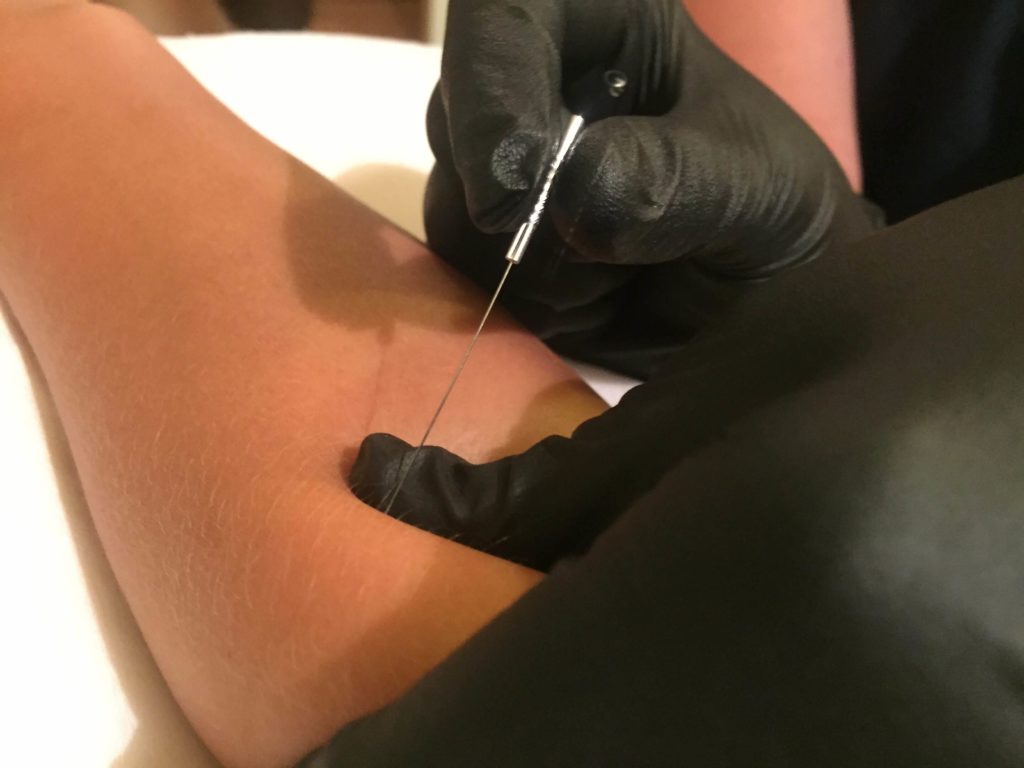Dry Needling At MOSAIC Health & Rehab

What is Dry Needling? Dry needling is a form of skilled instrument-assisted manual therapy. By inserting a thin filiform needle into a muscle, pain can be decreased. It can also reduce muscle tension, and improve joint mobility. Dry needling helps “reset“ the muscle by stimulating the nervous system. It also improves blood flow, promotes relaxation, and decreases over activity of the muscle.
Dry needling is not a stand-alone intervention. Therefore, it is part of a broader approach of physical therapy using an individualized blend of exercise, stretching, and other appropriate interventions. It resets the muscle by eliciting a reflexive, local twitch response to help decrease spontaneous electrical activity, improve blood flow, decrease banding, and promote relaxation of the muscle.
When an injury occurs from repetitive use or an acute trauma, damaged tissues produce inflammation. These tissues may go into a protective tension state. This guards against further damage from the use of the injured muscle. This produces trigger points which are tender, taut bands of muscle that can produce either local or referred pain. These trigger points inhibit circulation which prevents oxygen-rich blood from reaching the tissue and waste products from leaving.
Other adverse changes that occur in these tissues include increased acidity, spontaneous electrical activity at the neuromuscular junction, and biochemical changes that can affect pain sensitivity. These changes stimulate the body to produce fibroblasts, a cell that produces fibrosis or scar tissue. Adhesions may build up around the muscles and tissues. This limits their ability to fully lengthen or shorten. It can also cause compression and irritation of nerves, such as with carpal tunnel syndrome. This typically leads to biomechanical disturbances in muscle activation patterns and daily function.
The Difference Between Dry Needling and Acupuncture
Dry needling is not acupuncture, and there are many key differences between the two. Dry needling is based on western neuroanatomy and the modern scientific study of the body. It treats specific musculoskeletal or neurological impairments and pain. Acupuncture is based on the ancient principles of traditional Chinese medicine and uses the “Chi,” or flow of energy, to treat systemic dysfunction such as allergies, digestive problems, poor eyesight, and the common cold, as well as musculoskeletal issues. Aside from the theoretical basis, the technique, depth of needle insertion, intent, and duration of treatment also varies considerably. Dry needling is not appropriate for everyone and the treating physical therapist will help weigh the benefits and risks of treatment and ensure appropriate patient selection.
